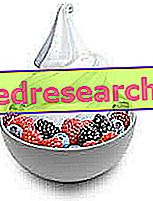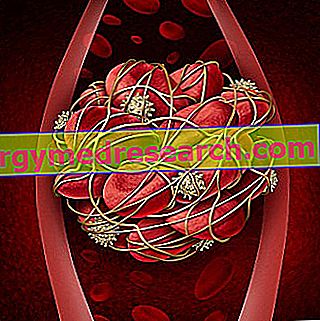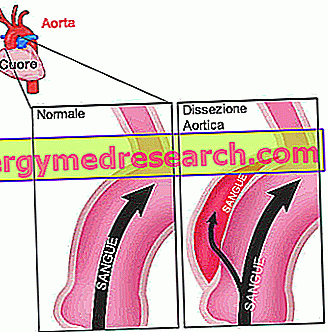How calcium is absorbed by the body
The absorption of alimentary calcium occurs mainly in the upper part of the small intestine, thanks to two distinct mechanisms. The first is an active, saturable transport, present in the duodenum and in the first part of the fast. This mechanism involves a series of calcium-binding transporter proteins, whose synthesis is stimulated by calcitriol, that is, by vitamin D activated at the kidney level (1, 25- (OH) 2 -colecalciferol).

- from the homeostasis of the mineral in the body, which increases it in case of deficiency or increased need, such as during adolescence, pregnancy and lactation;
- from age, being superior in the child compared to the adult and even more to the elderly.
The second mode of absorption of food calcium uses passive transport for simple paracellular diffusion. As such it is non-saturable and independent of age, vitamin D and mineral requirements; according to this route the calcium is absorbed along the whole tenuous, mainly in the ileum, and in small part also in the colon.
Active absorption becomes prevalent when the meal is poor in calcium, while the fraction absorbed by passive transport increases as the calcium content of the chyme increases.
What factors influence the absorption of food calcium?
There is a great adaptability of the organism with regard to intestinal calcium absorption. As an indication, children absorb 60% of food calcium, about twice as much as adults (30%) and triple as the elderly (20-25%). The amount absorbed in the various ages is further influenced by dietary and non-food factors. Among the latter, the most important influence is given by the sun exposure which, also depending on the latitude, covers about 80% of the need for vitamin D, synthesizing it starting from a derivative of cholesterol. Hepatopathies and severe nephropathies, malabsorption syndromes, hypoparathyroidism, intestinal resection surgery, antibiotics and laxatives are other factors that can significantly decrease the absorption of food calcium. As far as the diet is concerned, instead, it must be clarified first of all that the influence of the elements we are going to examine becomes significant, to the point of creating imbalances, only in extreme cases. For example, the reduced absorption of calcium induced by phytates, oxalates and some dietary fibers can generate calcium deficiencies only when the diet is extremely rich in fiber and low in calcium (as occurs in many vegan diets).
How to improve calcium absorption
They facilitate the absorption of calcium (within the same meal or a close meal):
• the presence of proteins (calcium binds to amino acids and is thus more easily absorbed), in particular those of dairy products;
• intestinal acidity (symbiont acidophilus bacterial flora), which solubilizes calcium salts (in this sense prebiotics and probiotics tend to increase mineral absorption);
• the ratio of Calcium / Phosphorus in the diet close to one;
• lactose and other simple sugars.
They impede the absorption of calcium (within the same meal or a close meal):
• a Calcium / Phosphorus imbalance, a condition that occurs following the excessive intake of animal proteins;
• intestinal alkalinity, which makes calcium salts less soluble;
• a defect in fat absorption (steatorrhea), in which case the calcium forms with the fatty acids insoluble soaps;
• a vitamin D deficiency;
• phytic acid (bran, fiber, whole grains), oxalic acid (spinach, rhubarb, cocoa) and tannins (tea), coffee and alcohol.
Let us recall, to conclude, that a good intestinal calcium absorption does not necessarily reflect a good bioavailability of the mineral. Once absorbed and poured into the blood, in fact, calcium can be eliminated in the urine or deposited in the bones (in addition to participating in the numerous other functions for which it is responsible); in this sense, the greatest stimulus to the deposition of calcium in the skeleton is given by physical activity and in particular by that which involves important, but not excessive, stresses, such as dancing, walking, jogging and toning exercises in the gym. The urinary calcium losses are instead reduced by phosphorus and enhanced by sodium (30-40 mg for every two extra grams of food intake) and by a diet rich in animal proteins.



